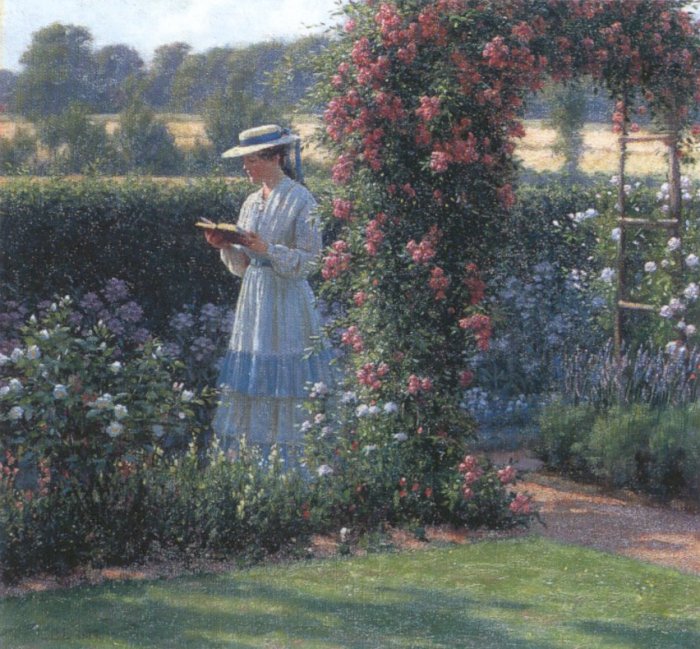
Maybe you won’t be reading in the idyllic surroundings pictured by Edmund Leighton—even in the temperate San Francisco Bay Area, despite the data reflected in the last link below, it’s not nearly so balmy here right now—but the variety and depth of this week’s suggested reading will engross you just as much. Or so I hope!
- My Climate Change, Issues in Science and Technology, Winter 2016 — The journalist Andrew C. Revkin explains how “[d]ecades of reporting on climate science and the climate policy debate have led me through a long evolution in my thinking, and I hope to a little practical wisdom.”
- Values and Vaccines, Aeon, February 16, 2016 — Looking at media coverage of fights over vaccination, Maggie Koerth-Baker observes, “If two groups don’t agree on what the argument is about, then public debates become basically futile, no matter how many times you have them.” Does the same dynamic apply to other conflicts over science?
- Ancient Humans May Have Left a Genetic Mark on Neanderthals, The New York Times, February 17, 2016 — If modern humans have a smattering of Neanderthal genes, is it any surprise that a new study reveals that Neanderthals had a smattering of genes from their Homo sapiens cousins? But it’s not clear how they acquired them.
- Update That Museum Exhibit? Old Bones, February 17, 2016 — At the Society for Vertebrate Paleontology’s blog, Andy Farke of the Raymond M. Alf Museum of Paleontology considers why it’s so hard to update museum exhibits to reflect changes in science. Unsurprisingly, he explains, “In most cases, it comes down to time and money.”
- It’s a Fishapod! Nautilus, February 18, 2016 — Sean B. Carroll (a member of NCSE’s Advisory Council) describes the work of Neil Shubin and his colleagues in discovering the now-iconic "fishapod" Tiktaalik. Adapted from Carroll’s book Remarkable Creatures: Epic Adventures in the Search for the Origin of Species (2009).
- Zika Outbreak Could Be an Omen of the Global Warming Threat, The New York Times, February 18, 2016 — Is it a coincidence that the recent outbreak of the Zika virus—spread by heat-loving mosquitos—occurred in the hottest year on record? “As we get continued warming, it’s going to become more difficult to control mosquitoes,” warns a researcher.
- How Much Warmer Was Your City in 2015? The New York Times, February 19, 2016 —This interactive version of the Times’s classic weather chart shows you how much warmer your city was in 2015 than normal. More than 90 percent of the cities among the 3116 in the database—including the Bay Area, home to NCSE—had a warmer-than-average year.

